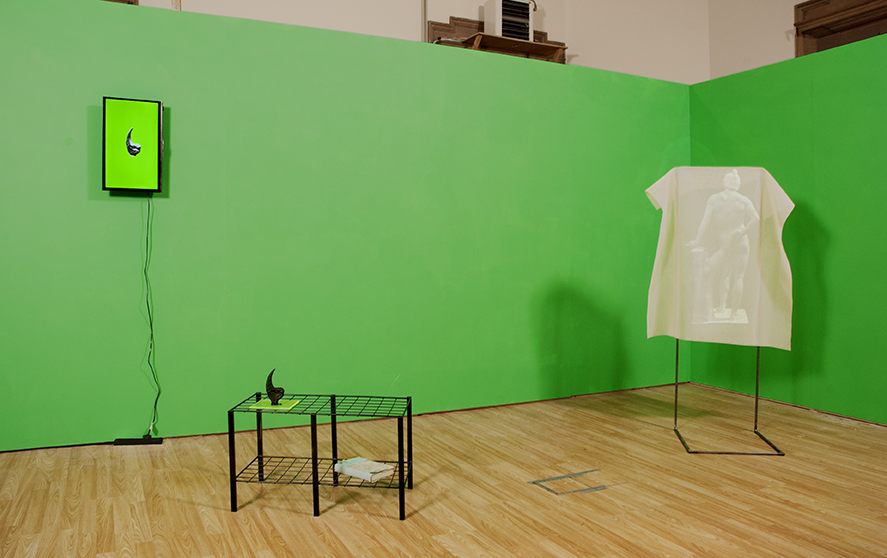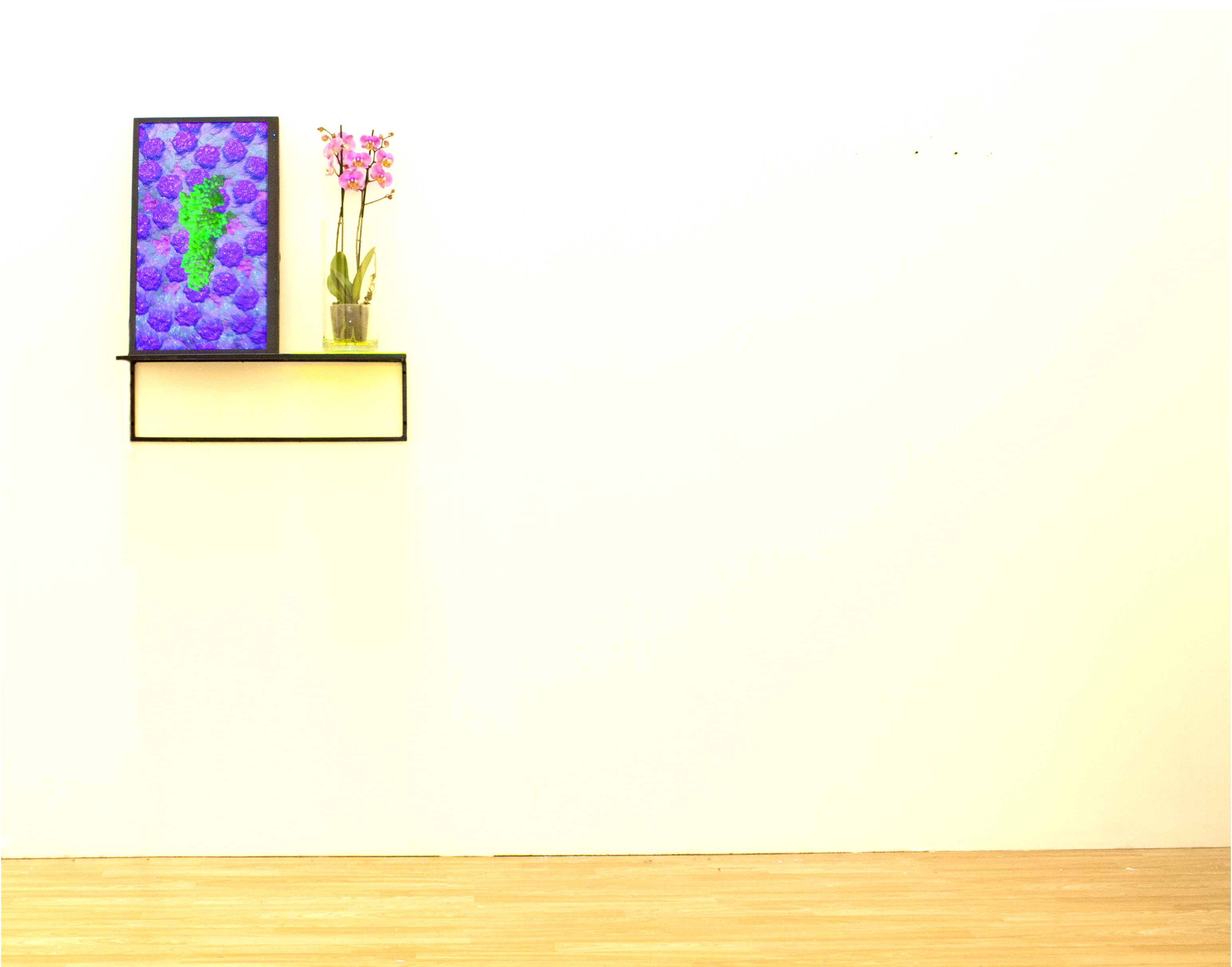Will Kendrick
Interview by Trevor H. Smith
Published April 2015
-
Will Kendrick uses diverse forms and eclectic referents to talk about the blurring of lines between the physical and digital realms, reflecting a broad spectrum of human endeavour in our hyper-saturated, globally connected experience. The work questions notions of futility and pragmatism in relation to their usefulness to humanity.
-
To give readers a sense of the work I’d like to invite you to talk a little about the materials you use, both physically and digitally, why you choose them, and what you do with them.
The imagery and materials I am interested in vary quite greatly in a sense but I think they all have a feeling of being close to the imagined portal between physical and virtual space. I often select physical objects and materials that elude to the hyper real or capsulate an awareness of networks. The thing they often do best is talk of the relationship between the biological genetic realm and that of the technologies we produce. Both are bound by code. I think it is important for the work to keep crossing this space, allowing them to overlap and entangle both in the material and in the imagery.

I kept dreaming of a world i'd thought i'd never see, 2015
The colours in your most recent works are a reminder to me that you started out as a painter, before combining pigment and resin to create more sculptural works, and now your ideas take form as film and projection. How important is that painting background to you? Do you still think like a painter?
Painting has always stayed with me. I think it is by its very nature a virtual object and its history and language is completely entwined with that of digital practice. I think the knowledge of colour I accrued will also forever be embedded in me but I don’t know whether I was a ‘real painter’ as I was never really particularly good at dealing with it as a material. I was always too obsessed with what the stuff was doing on the surface to worry too much about the image I was attempting to construct, which was a good thing, believe me. I guess I am still obsessed with colour on a surface. That interest has changed over time. I am now working on a body of work that has a focus on still life using 3d rendering and printing.

We Have Flown The Nest (installation view), 2015
It's interesting that you mention the surface, that's clearly still your main concern, along with that obsession with colour. Often the surface to which you refer is one or more of the many screens via which we conduct our daily lives - your screen-based work is often disrupted by its projection over a classical sculpture, say, or - in your recent show, Only the Statues Remain - onto the mists and backdrops of the Roman Baths in the city of Bath. How does that tension between surfaces affect the work and the viewer's experience?
I guess when we talk surface it’s rude not to talk painting too. I think that in some respects the screen operates in a similar way to painting. The images they produce are both virtual artefacts. They both open out into another space and are heavily reliant on the viewers’ perception of that proposed space. Having said that, I think allowing the surface to wrap a physical object places it into another reading. It starts to act as a skin, very much like that of our bodies or perhaps more relevantly that of a computer generated model. I think this works both ways though. I have recently been working with materials that reference that skin and allow the images to also partially pass through them. In terms of the interaction between the virtual and physical, this way of working has really developed the conversation. The body, the physical elements and the light really bring the viewers’ perception into the focus.

Only the Statues Remain / Mclellan, 2015
Thinking about work that bridges that gap between the virtual and the physical - the screen and its surroundings - you'll be aware of the numerous attempts to theorise Post-internet Art. Those terms are probably best used as a simple chronological place marker, like postmodernism, but also like postmodernism, certain traits appear to run through works that come under the post internet umbrella. Aesthetically, for example, art post-internet often prioritises how a piece looks on screen, or indeed a physical artwork might appear as it were already on a screen. In this sense your work could be categorised away, what are your thoughts on Post-internet Art and where you sit in relation to it.
I think over the past decade or so these terms have been useful anchor points to reflect on what’s going on. A few years back it was the impact of the globalised network which was discussed in Bourriaud’s Altermodern; James Bridle’s New Aesthetic helped to frame the transference of digital aesthetics into the physical realm, and now it’s no different. People are always trying to throw a rope around work that uses digital methods. There is a huge wealth of work out there that could fit into this term or that term but quite often it’s dealing with very different subject matter. I don’t know how useful it is for the work itself but it’s certainly interesting to think on. It’s very hard to sit inside something and really analyse what it is with any great accuracy. The work moves as fast as the technology that is in some ways driving it. I think like most artists I am trying to have a conversation about the environment that I have been a part of and tech is a very big part of that story. I am always interested by how theorists are framing the work happening now but by the time it’s been said the work has gone somewhere else.

Rebourn, continually, forever, 2015
And where might that ‘else’ be for you? Do you see your work opening out into other media – I see plant-life and what looks like printed fabrics appearing in your most recent sketches – speaking of which, you post a lot of sketch-work on your blog, I was wondering what’s to gain by publishing those; is there a kind of two-tier production process in place there? Sketches for the blog, exhibited works on the website?
I’m not sure exactly at the moment but I do have a few projects in the planning stages which are going to be really awesome to work on. I think I also have to focus on my postgrad and just keep developing the work. I’m really enjoying this at the moment, it has given me a lot of freedom to expand into new territories and to make some mistakes along the way. The web is a good place for this. I use my blog as more of a live space. Those platforms operate much more like sketchbooks for me but as with all aspects of the work i think its important to allow different facets to overlap. Letting the blog and the gallery combine can be a good way for me to test work. Having said that I am planning quite a large scale installation work for this years Open House festival in Glasgow but no matter how much planning and testing seems to go into my work I am always editing up to the very last minute. It can be quite a stressful process at times but I think it’s very healthy for the work and it definitely keeps it exciting.
-
Will Kendrick lives and works in Glasgow. Recent exhibitions include Only the Statues Remain, Roman Baths, Bath, Up Down and Around, GoMA, Glasgow, Down a bit and to the right, McLellan Galleries, Glasgow, Intervals and Small Vibrations, Laurieston Arches, Glasgow and MMORPG, Spike Island, Bristol.
-
If you like this why not read our interview with Iain Hales
-
© 2013 - 2018 YAC | Young Artists in Conversation ALL RIGHTS RESERVED